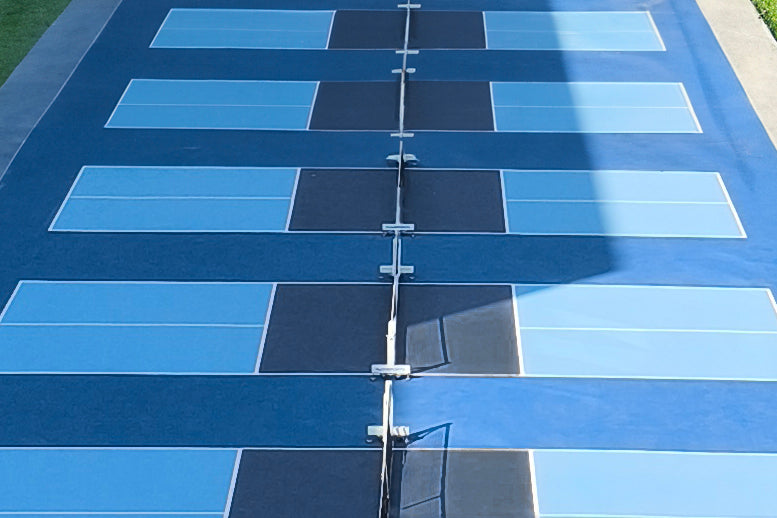How Pickleball Court Surfaces Impact Your Game
If you’re like me, you’ve probably noticed how different pickleball courts can feel depending on where you play. Understanding these differences can help you adapt your strategy and improve your overall performance. Let’s dive into the main types of pickleball court surfaces and how they can affect your game.
1. Asphalt
Asphalt is one of the most common surfaces for pickleball courts, particularly in outdoor settings. Known for its durability and affordability, asphalt provides a consistent bounce and is relatively easy to maintain. However, over time, asphalt can develop cracks due to weather exposure, which might affect ball movement and player footing.
Impact on Your Game:
-
Offers a predictable ball bounce, making it ideal for players focused on precision.
-
Can be tough on joints due to its harder surface, especially during long matches.
-
Best suited for players who enjoy a fast-paced game.
2. Concrete
Concrete courts are another popular choice, often seen in both indoor and outdoor settings. These surfaces are slightly harder than asphalt but tend to last longer without cracking. Concrete courts can be coated with a specialized acrylic layer to enhance grip and minimize slipperiness.
Impact on Your Game:
-
Provides excellent ball bounce and consistency.
-
Can be more punishing on knees and ankles compared to softer surfaces.
-
Ideal for competitive play due to its reliability.
3. Synthetic or Acrylic Coatings
Many modern pickleball courts feature synthetic or acrylic coatings applied over asphalt or concrete. These surfaces are designed specifically for sports like pickleball, offering optimal grip, cushioning, and vibrant colors that improve visibility.
Impact on Your Game:
-
Enhances traction, reducing the risk of slipping.
-
Adds a layer of cushioning, making it easier on joints.
-
Consistent ball bounce makes it a favorite for tournaments and serious players.
4. Indoor Gym Floors (Wood or Synthetic)
Indoor pickleball courts often use wood or synthetic gym floors. These surfaces are commonly found in multi-purpose facilities where basketball and other sports are played. While they’re smooth and polished, they can be more slippery than outdoor surfaces.
Impact on Your Game:
-
Faster ball speeds due to the smoother surface.
-
Requires adjustments in movement to prevent slipping.
-
Great for controlled, finesse-based play.
5. Turf or Carpet
Turf or carpet courts are less common but can be found in some indoor pickleball facilities. These surfaces offer a unique playing experience, with softer footing and slightly unpredictable ball behavior.
Impact on Your Game:
-
Slower ball bounce, which can disrupt fast-paced strategies.
-
Gentler on joints, making it ideal for players prioritizing comfort.
-
Encourages a focus on placement and spin rather than power.
6. Temporary Surfaces
In some cases, pickleball courts are set up temporarily on existing surfaces, such as tennis courts or parking lots. These surfaces may include portable nets and taped or painted lines.
Impact on Your Game:
-
Ball behavior can vary depending on the underlying surface.
-
Adaptability is key, as conditions might not be as controlled.
-
Perfect for casual play and community events.
How to Adjust Your Play for Different Surfaces
-
Footwear Matters: Invest in shoes with the right grip and support for the surface you’re playing on.
-
Adapt Your Strategy: On faster surfaces like concrete, focus on quick reactions and flat shots. On slower surfaces like turf, emphasize spin and placement.
-
Take Care of Your Body: Harder surfaces can be taxing, so proper stretching and recovery are essential.
Conclusion
The surface you play on has a significant impact on your pickleball experience, influencing everything from ball behavior to player movement. By understanding the nuances of each type of court, you can make smarter equipment choices and adjust your strategy to suit the conditions. Whether you’re playing on asphalt, concrete, or turf, embracing these differences will help you become a more versatile and resilient player.
So, the next time you step onto a new court, take a moment to assess the surface, adapt your game, and enjoy the challenge!




